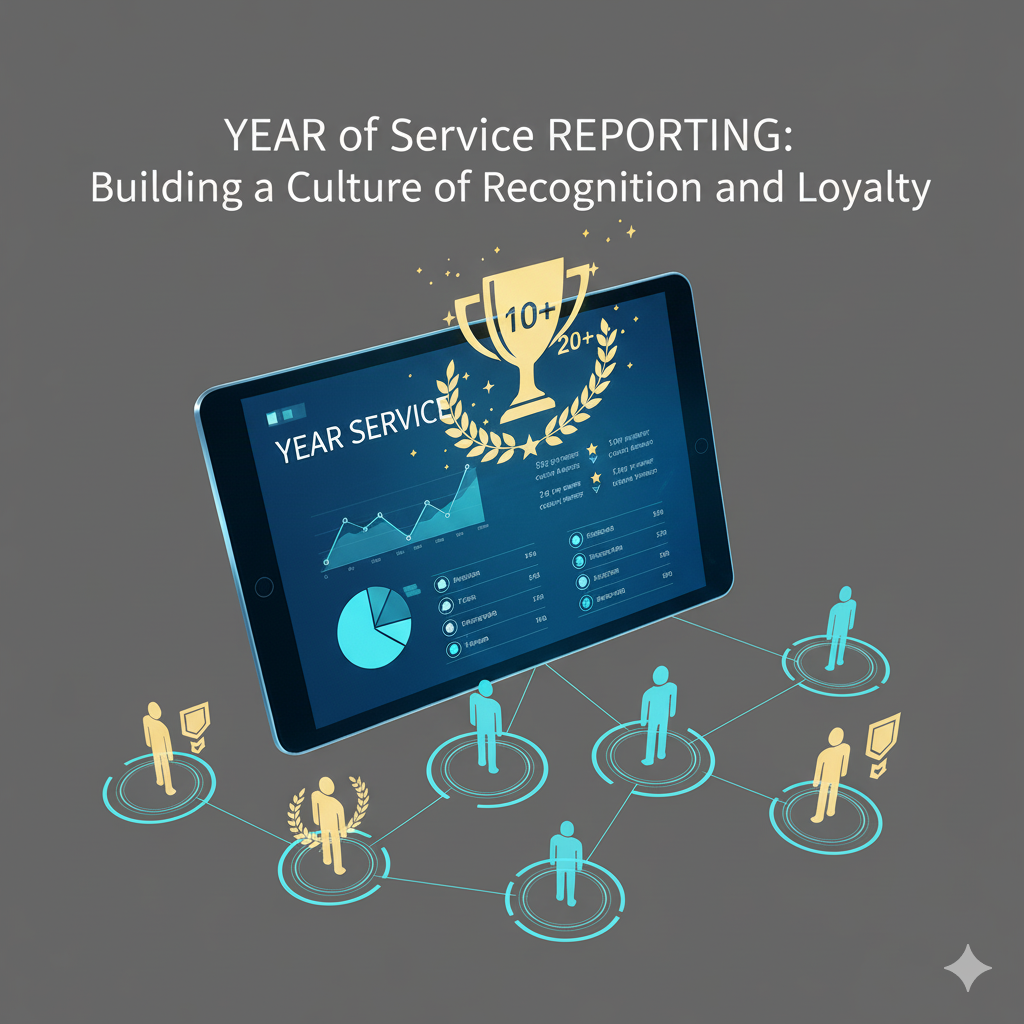Employee loyalty is one of the most valuable assets any organization can have. Recognizing employees for their dedication and years of service not only boosts morale but also strengthens retention. The good news is that tracking tenure doesn’t have to be complicated — with an HRIS (Human Resource Information System), Year of Service Reporting can be automated and data-driven.
In this article, we’ll explore what Year of Service Reporting is, why it’s important, and how it helps HR teams build a workplace culture focused on recognition and loyalty.
What is Year of Service Reporting in HRIS?
Year of Service Reporting is a feature in most HRIS platforms that automatically calculates how long each employee has been with the organization based on their hire date.
This report helps HR managers:
- Identify employees approaching milestone anniversaries (1 year, 5 years, 10 years, etc.)
- Plan recognition events or rewards programs
- Gain insight into workforce stability and retention trends
Instead of manually checking employee records, HR teams can generate this report instantly, saving time and ensuring accuracy.
Why Year of Service Reporting Matters
Enhances Employee Recognition
Recognizing employees for their tenure creates a sense of belonging and appreciation. Celebrating work anniversaries — whether through certificates, bonuses, or simple acknowledgments — motivates employees to stay longer.
Strengthens Retention
When employees feel valued, they are less likely to look for opportunities elsewhere. A consistent recognition program based on accurate tenure data can significantly reduce turnover.
Improves Workforce Planning
Tenure data helps HR anticipate retirements, promotions, and succession planning needs. This allows for better staffing decisions and smoother transitions.
Boosts Morale and Engagement
Employees who are recognized for their loyalty tend to be more engaged, productive, and committed to company goals.
Supports Compliance and Reporting
For LGUs and private companies in the Philippines, tenure data is also useful for compliance with government-mandated benefits such as retirement pay, service incentive leave, and separation benefits.
Key Features of a Good Year of Service Report
When evaluating HRIS software, make sure its Year of Service Reporting includes:
- Automatic Tenure Calculation – Based on hire date and current date
- Milestone Notifications – Alerts HR when employees hit key anniversaries
- Customizable Filters – View tenure by department, location, or employment type
- Integration with Rewards Programs – Link recognition events directly to the report
- Export Options – Generate PDF or Excel files for management review
How to Use Year of Service Reporting Effectively
- Plan Work Anniversary Celebrations – Recognize employees’ contributions with awards or announcements.
- Develop Retention Programs – Offer loyalty incentives for long-tenured employees.
- Align with Succession Planning – Use tenure data to prepare future leaders.
- Analyze Retention Trends – Identify departments with high turnover and investigate causes.
- Communicate Achievements – Share milestone celebrations on internal newsletters or social media.
Building a Culture of Recognition and Loyalty
Recognition should be consistent, meaningful, and timely. Using Year of Service Reporting in your HRIS allows you to celebrate employees at the right time, ensuring no milestone goes unnoticed.
By making recognition part of your company culture, you can:
- Increase employee engagement
- Build stronger relationships between staff and management
- Create a workplace where employees feel valued and motivated
Conclusion
Year of Service Reporting is more than just an HR metric — it’s a strategic tool for building a culture of recognition and loyalty. By leveraging your HRIS to track employee tenure, you can strengthen retention, boost morale, and create a workplace where employees are proud to stay and grow.
If your organization is still manually tracking work anniversaries, it’s time to switch to a modern HRIS & Payroll System with automated Year of Service Reporting. You’ll save time, ensure accuracy, and foster a more engaged workforce.

